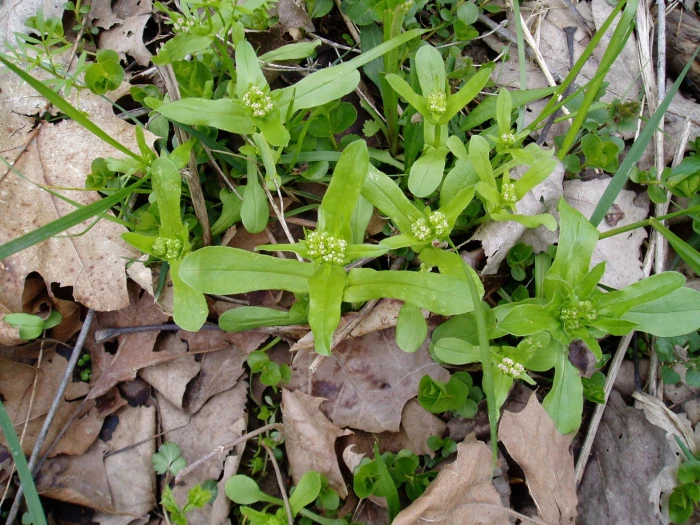Goosefoot Cornsalad
(Valerianella chenopodiifolia)
Goosefoot Cornsalad (Valerianella chenopodiifolia)
/
/

© Summit Metro Parks
CC BY 4.0
Image By:
© Summit Metro Parks
Recorded By:
Copyright:
CC BY 4.0
Copyright Notice:
Photo by: © Summit Metro Parks | License Type: CC BY 4.0 | License URL: http://creativecommons.org/licenses/by/4.0/ | Uploader: smpbiologist-rcurtis | Publisher: iNaturalist |

















Estimated Native Range
Climate Requirements for Fort Lee, New Jersey
| This Plant | Your Site | Plant Suitability for Your Location | ||
|---|---|---|---|---|
| • Precipitation | 33" - 50" | 48" | Aquatic | Aquatic |
| • High Temp. | 77°F - 87°F | 84°F | Your summer temperatures are normal for this plant. | Excellent |
| • Low Temp. | 12°F - 24°F | 23°F | Your winter temperatures are normal for this plant | Excellent |
This plant may not grow well at your location - your precipitation is too high.
Summary
Valerianella chenopodiifolia, commonly known as Goosefoot Cornsalad or Southwest Cornsalad, is an annual herb that is native to arid and semi-arid regions, specifically desert mountains and dry rocky hillsides in the northeastern and midwestern United States. This plant typically grows at a moderate rate to a height and width of 0.5-1.5 feet (0.15-0.5 meters). It features small, white, inconspicuous flowers that bloom in the spring, and while the flowers are not particularly showy, they do contribute to the local ecosystem by providing nectar for pollinators.
Goosefoot Cornsalad is well-suited for xeriscaping and rock gardens due to its low water requirements and ability to thrive in sandy or loamy soils with good drainage. It prefers full sun, making it an excellent choice for sunny, dry areas where other plants might struggle. Its drought tolerance and ease of maintenance are notable benefits for gardeners in arid climates. While not commonly used for ornamental purposes, it can be a practical addition to naturalistic plantings and restoration projects.CC BY-SA 4.0
Goosefoot Cornsalad is well-suited for xeriscaping and rock gardens due to its low water requirements and ability to thrive in sandy or loamy soils with good drainage. It prefers full sun, making it an excellent choice for sunny, dry areas where other plants might struggle. Its drought tolerance and ease of maintenance are notable benefits for gardeners in arid climates. While not commonly used for ornamental purposes, it can be a practical addition to naturalistic plantings and restoration projects.CC BY-SA 4.0
Plant Description
- Plant Type:
- Height: 0.5-1.5 feet
- Width: 0.5-1.5 feet
- Growth Rate: Moderate
- Flower Color: White
- Flowering Season: Spring, Summer
- Leaf Retention:
Growth Requirements
- Sun: Full Sun
- Water: Low
- Drainage: Fast, Medium
Common Uses
Low Maintenance, Rock Garden
Natural Habitat
Native to arid and semi-arid regions, specifically desert mountains and dry rocky hillsides in the Southwestern United States and Northern Mexico
Other Names
Common Names: Goosefoot Valerian , Southwest Cornsalad
Scientific Names: Valerianella chenopodiifolia , Fedia chenopodiifolia , Fedia fagopyrum , Fedia radiata , Fedia radiata var. leiocarpa , Fedia triquetra , Fedia triquetra , Valeriana chenopodiifolia , Valerianella fagopyrum , Valerianella triquetra
GBIF Accepted Name: Valerianella chenopodiifolia